Results 7,741 to 7,750 of 12096
Thread: Anandtech News
-
01-11-18, 12:14 PM #7741
Anandtech: Mushkin Unveils New Pilot & Helix-L M.2 SSDs at CES 2018: Up to 3.5 GB/s,
LAS VEGAS, NV — Mushkin on Wednesday formally announced its lineup of M.2 SSDs that it will be offering this year. All the drives are based on various controllers from Silicon Motion as well as 3D TLC NAND memory. Mushkin’s fastest Pilot-E-series SSDs will offer peak sequential read speed of up to 3.5 GB/s and will thus be aimed at high-end desktops.
This year Mushkin will offer four lineups of SSDs in M.2 form-factor and will continue to offer three families of 2.5”/SATA drives that were introduced earlier, so it is evident that module SSDs are taking over, at least in case of Mushkin. All of the new M.2 drives will use 3D TLC NAND memory (probably made by Micron) and will be powered (mostly) by Silicon Motion’s latest controllers featuring ECC engines based on LDPC methods. Needless to say, different drives will be aimed at customers with different budgets and needs.
The entry-level M.2 SSD lineup from Mushkin is the Triactor 3DL M.2 based on the Silicon Motion SM2258XT controller and featuring a SATA 6 Gbps interface. The Triactor 3DL M.2 will be available in 120 GB – 1 TB configurations (note that Triactor 3DL in M.2 and 2.5" form-factors have different configurations and modules seem to reserve more memory for overprovisioning) and will hit performance levels one would expect from a modern SATA drive — up to 550 MB/s sequential read speed and up to 505 MB/s sequential write speed in case of capacious drives. Mushkin intends to ship the Triactor 3DL M.2 drives sometimes in February.
A more advanced SSD family from Mushkin to be released in the coming months is the Helix-L. Based on Silicon Motion’s new SM2263XT controller for fast yet inexpensive SSDs, this one will use a PCIe 3.0 x4 interface and will be available in 120 GB – 1 TB configurations and will be DRAMless. Mushkin specs the drives for up to 2.4 GB/s sequential read speed as well as up to 1.7 GB/s sequential write speed, which looks rather good on paper. We do have an SM2263XT-based drive in our lab, but test results are not yet in, so we cannot verify Mushkin’s claims. The manufacturer plans to make the Helix-L products available in late February, or early March.
Next up comes the Pilot, Mushkin’s new “extreme performance” offering powered by Silicon Motion’s SM2262 controller with a PCIe 3.0 x4 interface. Mushkin will supply Pilot SSDs in capacities ranging from 120 GB to 2 TB and equipped with a DRAM cache, thus targeting pretty serious PCs. Higher-end Mushkin Pilot SSDs support sequential read speed of up to 3.2 GB/s as well as sequential write speed of up to 1.9 GB/s, according to figures released by SMI and repeated by Mushkin. Random read/write performance of the Pilot is up to 370K/300K IOPS, but Mushkin does not specify exact models that offer such performance. The manufacturer expects to release its Pilot drives sometimes in February.

Mushkin’s consumer M.2 lineup will be led by the flagship Pilot-E series based on Silicon Motion’s SM2262EN controller. The “ultimate performance” Pilot-E will be offered in 250 GB – 2 TB configurations and will be rated for up to 3.5 GB/s sequential read speed as well as up to 3 GB/s sequential write speed. As for random performance, it will be in line with the Pilot series. It is noteworthy that both the Pilot and the Pilot-E SSDs are not equipped with heat spreaders (at least, based on their press shots). Mushkin intends to launch the Pilot-E drives this March, but keep in mind that companies tend to spend time ensuring that their premium offerings deliver the best possible performance and reliability.
Since pricing of NAND flash is fluctuating, SSD makers tend not to announce MSRPs of their products well ahead of their availability and two or three months is a long time when it comes to pricing of commodities (such as memory). That said, it is hard to predict prices of Mushkin’s new SSDs. Clearly, the Pilot and the Pilot-E series drives designed to hit maximum performance will cost accordingly, do not expect any bargains here. As for other products, let’s wait and see.Brief Specifications of Mushkin 2018 M.2-2280 Consumer SSDs Family Triactor 3DL Helix-L Pilot Pilot-E Positioning Value
PerformancePerformance Extreme Performance Ultimate Performance Interface SATA 6 Gbps PCIe 3.0 x4 Capacity 120 GB - 1 TB 120 GB - 2 TB 250 GB - 2 TB Controller SM2258XT SM2263XT SM2262 SM2262EN NAND Flash 3D TLC NAND Sequential Read 550 MB/s 2400 MB/s 3200 MB/s 3500 MB/s Sequential Write 505 MB/s 1700 MB/s 1900 MB/s 3000 MB/s Random Read IOPS 73K IOPS 280K IOPS 370K IOPS Random Write IOPS 80K IOPS 250K IOPS 300K IOPS Pseudo-SLC Caching Supported DRAM Buffer No Yes, capacity unknown Warranty 3 years MTBF 1,500,000 hours
Related Reading:- Silicon Motion Roadmap: Lots Of NVMe SSD Controllers
- Intel Previews Optane 800p 56GB And 118GB M.2 SSDs
- Plextor Launches M9Pe NVMe SSDs
- Corsair Launches the Neutron NX500 1.6 TB PCIe SSD
- The Intel Optane SSD 900p 480GB Review: Diving Deeper Into 3D XPoint
- Mushkin Announces Helix SSDs: 2.5 GB/s, 3D MLC NAND, SM2260, 2 TB Capacity
More...
-
01-11-18, 12:14 PM #7742
Anandtech: Maingear Displays New F131 Desktop with new ‘Apex’ Integrated Cooling
LAS VEGAS, NV — Maingear hit the CES 2018 floor armed with its new flagship F131 desktop gaming PC that has been redesigned from the ground up to the “Apex” of custom liquid cooling.
The new Maingear F131 looks similar to the previous version but with a taller and slimmer chassis, new PSU shroud, and a solid front panel (the previous F131 used a ventilated front panel). The F131 can be equipped with Intel Z370 or X299 chipsets, as well as the AMD B350 Micro-ATX motherboards. Maingear uses ASUS Strix Z370G Gaming, EVGA X299 Micro, and MSI B350M Micro-ATX motherboards along with all of their flagship processors for the chipset (Intel Core i7-8700K, i9-7980XE, and AMD Ryzen 7 1800X. Memory and storage options remain mostly intact from the previous model as well as using dual Geforce Titan Xp graphics cards. With the new F131, Maingear will not be offering AMD GPUs. This is due to water block compatibility issues. The Vega based GPUs (and their thicker coolers) have also been problematic for the new chassis, so the company stopped offering it.
The tempered glass panels will showcase customizable configurations including soft (Stock) and hard-tube (Super Stock) custom liquid cooling loops for the CPU and GPUs. The redesigned chassis offers more USB connectivity with a USB 3.1 Type-C and four USB 3.0 ports on the front panel. The PSU, which used to be exposed, is now covered by a metal shroud which also has three 2.5-inch drive bays to show off your choice of storage. The top of the case is now able to accommodate up to a 420mm radiator which could give a custom liquid cooling loop even more thermal dissipation abilities.
Apex ICS
The new chassis was redesigned in conjunction with a new custom cooling device called the Apex Integrated Cooling System (Apex ICS). The company engineered the acrylic reservoir/pump combo in partnership with Bitspower in an effort to create a unique do-it-all cooling device for a monster of an open-loop liquid-cooled gaming PC.
The Apex reservoir is two inches thick and has an RGB LED strip inside which is controlled via remote (as well as the other RGB LED interior lights) and lights up the clear acrylic in the color of your choice. The dual pumps each run on low power but yield a high flow rate – enough to push liquid through a CPU, two GPUs, and a 420mm radiator comfortably. The pumps are powerful enough to run the loop individually if one of them happens to fail. The loop also includes temperature and flow rate sensors built-in to the Apex and the PWM connectors let your control and monitor the Apex’s status from within Windows via the motherboard vendor’s respective software. The massive cooling device spans the entire vertical length of the case from top to bottom occupying the majority of the tempered glass window (also covers the PSU shroud).
Maingear also announced two new additions to its automotive paint finishing services – Spectrum Chameleon and MARC II. The Spectrum Chameleon finishes are exactly as they sound. The visible colors appear to be constantly shifting within the desired base color spectrum. If you have ever seen a newer car with a lustrous, hard-to-distinguish, yet eye-catching automotive finish, that is what Maingear has accomplished with its Spectrum Chameleon paint options. The MARC II finish looks more like a graphics wrap, but it’s not. The seven-step painting process takes customized artwork (your own, or from a choice of Maingear designs) and applies it to the exterior chassis of the PC in a high-gloss automotive finish.
The new Maingear F131 custom desktop gaming PC is available now from the company’s website starting at $1599. Spectrum Chameleon and MARC II automotive finishes launched January 9th starting at $749 and $149 respectively.
Related Reading:Maingear F131 Desktop w/ Apex ICS Cooling CPU Up to:
Intel Core i7-8700K (Z370)
Intel Core i9-7980XE (X299)
AMD Ryzen 7 1800X (AMD B350)Graphics Up to Dual NVIDIA Geforce Titan Xp 12GB GDDRX5 (SLI) Memory Intel Based: Up to 64GB DDR4-2666 (Z370, X299)
AMD Based: Up to 32GB DDR4-3200 (All)Storage Up to 10TB 2.5" HDD (2)
4 TB 2.5" SSD (3)
2TB PCIe NVMe SSD (2)Case Maingear F131 (Custom Designed) Cooling Up to:
240mm AIO Liquid Cooling (CPU)
420mm Open-Loop (CPU,GPU)
Apex Integrates Cooling SystemMotherboard ASUS Strix Z370G (Intel Z370
EVGA X299 Micro (Intel X299)
MSI B350M Gaming Pro (AMD B350)Power Supply Up to 1600W EVGA Supernova P2 Networking Gigabit Ethernet: 802.1ac Wi-Fi (Intel Z370) USB Ports Front Panel:
1 x USB 3.1 Type-C
4 x USB 3.0Video Ports Variable Other Spectrum Chameleon, MARC II Automotive Finishes, Apex Integrated Cooling System OS Windows 10 Home or Pro 64-bit Dimensions Unknown Price Starting at $1599 - Dell at CES 2018: Insipiron Gaming Desktop Receives INtel 8th Gen Processors...
- Origin PC Intros Next-Gen Customizable Desktops: Genesis, Millenium, and L-Class
- MSI Infinite X Desktop US Launch: Core i7-8700K, GTX 1070 & More
Derek Forest Contributed to this report
More...
-
01-11-18, 12:57 PM #7743
Anandtech: Samsung Starts Production of HBM2 “Aquabolt” Memory: 8 GB, 2.4 Gbps
Samsung this week announced that it had started mass production of its second-generation HBM2 memory code-named “Aquabolt”. The new memory devices have 8 GB capacity and operate at 2.4 Gbps data rate per pin. To hit the new data rate, Samsung had to apply new technologies related to TSV design and thermal control. Samsung intends to offer the new memory to customers for use in next-gen HPC, AI and graphics solutions.
General architecture of Samsung’s new 8 GB HBM2 “Aquabolt” memory is similar to the company’s previous-gen 8 GB HBM2 “Flarebolt” devices: each KGSDs (known good stacked die) is comprised of eight 8-Gb memory ICs (integrated circuits) interconnected using TSVs (through silicon vias) in an 8-Hi stack configuration. Every KGSD features a 1024-bit bus and with a 2.4 Gbps per pin data rate, it can offer up to 307.2 GB/s of memory bandwidth per stack.
When JEDEC published the HBM2 specification about two years ago, the spec only discussed three different speed bins for this type of memory —1 Gbps, 1.6 Gbps and 2.0 Gbps at 1.2 V for core and I/O — in context of timing parameters. Manufacturers are free to offer other speed bins and then developers of actual products can clock HBM2 memory in accordance with their own requirements for performance and power consumption. Meanwhile, standard HBM2 packages are offered with 1.6 Gbps and 2.0 Gbps speed bins (their actual clocks are 800 MHz and 1 GHz, respectively). It is noteworthy that to hit 2 Gbps, Samsung had to increase HBM2 voltages to 1.35 V, which is beyond what the spec allows, but so are realities of mass production.Samsung's HBM2 Memory Comparison Aquabolt Flarebolt Total Capacity 8 GB 8 GB 4 GB 8 GB 4 GB Bandwidth Per Pin 2.4 Gb/s 2 Gb/s 2 Gb/s 1.6 Gb/s 1.6 Gb/s Number of DRAM ICs per Stack 8 8 4 8 4 DRAM IC Process Technology 20 nm Effective Bus Width 1024-bit Voltage 1.2 V 1.35 V 1.2 V Bandwidth per Stack 307.2 GB/s 256 GB/s 204.8 GB/s
Samsung’s new Aquabolt products operate at 2.4 Gbps, which is higher than the standard was designed for. Meanwhile, it seems that all the other parameters of the new HBM2 “Aquabolt” memory are perfectly within the spec. Moreover, Samsung’s new memory even lowers its voltage back to 1.2 V as a result of internal optimizations.
To increase actual memory frequency to 1.2 GHz and decrease voltage to 1.2 V at the same time, Samsung had to apply a new method to reduce collateral clock interference between the 5000+ TSVs. Samsung says that to lower the clock skew it had to decrease the deviation of data transfer speeds among the TSVs, but does not go beyond that. In addition, the company increased the number of thermal bumps between the DRAM dies to distribute heat more evenly across each KGSD and thus better dissipate it. Finally, Samsung’s Aquabolt HBM2 products feature an additional protective layer at the bottom to increase the physical strength of the package. It is unknown whether the strengthening had an impact on mechanical characteristics of KGSDs, but this is a possibility.
Makers of memory usually announce mass production of new DRAMs after they complete production the first batch, so the HBM2 Aquabolt memory from Samsung might already exist in more or less mass quantities. Now, it is up to Samsung’s partners to use the new KGSDs in their products.
It is noteworthy that SK Hynix also has 2.4 Gbps HBM2 chips slated for Q1 availability in its product catalog. It is up to SK Hynix to make appropriate announcements, but it looks like Samsung is not going to be alone with fast HBM2 packages in the coming months.
Related Reading:- Samsung Increases Production Volumes of 8 GB HBM2 Chips Due to Growing Demand
- JEDEC Publishes HBM2 Specification as Samsung Begins Mass Production of Chips
- SK Hynix: Customers Willing to Pay 2.5 Times More for HBM2 Memory
- Hot Chips 2016: Memory Vendors Discuss Ideas for Future Memory Tech - DDR5, Cheap HBM, & More
Gallery: Samsung Starts Production of HBM2 “Aquabolt” Memory: 8 GB, 2.4 Gbps

More...
-
01-11-18, 04:51 PM #7744
Anandtech: MSI at CES 2018: New Desktop PC’s – Updated Trident 3 Arctic, Infinite X,
MSI’s has released information about three new updated lines from their Gaming Desktop segment. The Trident 3 Arctic, revealed in March 2017, The Infinite X, and the Aegis Ti3 will all get bumps in performance due to the use of Intel 8th Generation processors as well as graphics card support up to NVIDIA Geforce GTX 1080 Ti with the Trident 3 Arctic able to house a full GTX 1080 in its diminutive chassis.
Trident 3 Arctic
When the Trident 3 Arctic came out in early 2017, at the time MSI dubbed this unit as the world’s smallest true gaming PC. The intent was to pack in a lot of high-performance gaming components in a compact case. The white vertically oriented case stood out of the crowd from many of the cube-shaped competitors looking more like a gaming console than a PC. Fast forward to today and the Trident 3 Arctic gets an increase in performance by moving up to an 8th Generation Intel Core i7-8700 processor along with an NVIDIA Geforce GTX 1080 (from 7th Generation CPU and GTX 1070). With its small footprint, it can be a good gaming solution for those with space constraints offering a powerful punch in a small package.
The Trident 3 Arctic support up to 16GB (2x8GB) of DDR4 SO-DIMMs rated for DDR 2400 and is expandable to 32GB. Storage comes in the form of a 256GB PCIe SSD as well as a 2.5” 1TB SATA HDD. Wireless duties are handled by the Intel AC3168 supporting 802.11b/g/n/ac + Bluetooth 3.2 with LAN functionality handled by an Intel I219-V Gigabit Ethernet. There are a total of eight USB ports with one USB 3.1 (5 Gbps) Type-C on the front panel along with two USB 3.0 ports. On the back is another USB 3.0 port along with two USB 2.0 ports. There is one HDMI port for video output.
Gallery: MSI Desktop Trident 3 Arctic Gallery





Infinite X
The Infinite X gaming desktop features a more traditional tower design than the Arctic but still has some unique features. The chassis uses dual steel or dual tempered glass side panels, Mystic Light RGB LEDs, and MSI’s Silent Storm Cooling 3 Pro liquid cooling. Like the Trident 3 Arctic, the Infinite X now uses Intel 8th Generation CPUs and a GTX 1080 Ti for improved CPU and graphics performance. In the air of portability, the chassis has a built-in carrying handle as well as orienting the video card vertically so as not to put extra pressure on the PCIe slot. The exterior design stands out from the rest with its sharp angular design and circuit board RGB LED pattern on its brushed aluminum finished front panel.
The Infinite X uses the 8th Generation Intel Core i7-8700K processor paired with its NVIDIA Geforce GTX 1080 Ti for high-end performance. Out the box, the unit comes with 16GB (2x8GB) DDR4 2400 which is expandable to 64GB through its four DDR4 UDIMM slots. The storage configuration comes in the form of 2x M.2 NVMe PCIe SSDs for a total of 512GB. It also includes a 2TB 3.5-inch SATA HDD. In total, users have room for two 3.5-inch HDD, one 2.5-inch HDD/SSD, and two M.2 SSD. Wireless duties are handled by the same Intel AC3168 device offering 802.11b/g/n/ac along with Bluetooth 4.2. Wired LAN functionality is through an Intel I219-V Gigabit Ethernet. On the USB side of things, the Infinite X gives users a total of nine ports. On the front, there is one of each, USB 3.1 (5 Gbps) Type-C, USB 3.0, and USB 2.0. The back has four more USB 3.0 ports and two USB 2.0 ports. Display outputs consist of HDMI and DisplayPort on the back.
Gallery: MSI Desktop Infinite X Gallery





Aegis Ti3
The Aegis Ti3 is another MSI desktop line which is getting the 8th Generation Processor treatment as well as a GTX 1080Ti for upgraded graphics. The Aegis Ti3 is the flagship in MSI’s Gaming desktop lineup and intended for gamers who want ‘the very best’. Although the hardware inside is a selling point in itself, part of its charm has to do with the unique chassis which sits at an angle and has fairly aggressive styling looking almost like the head of a transformer on a pedestal.
The Ti3 is based on the Intel Z370 chipset and will use up to an Intel Core i7-8700K and up to the GTX 1080 Ti mentioned earlier. System RAM is in the form of 2x16GB (32GB total) of DDR4 2666 SO-DIMMs expandable to 64GB. Storage options include a 512GB RAID 0 setup using M.2 PCIe SSDs, while mass storage is a 3TB SSD. It also has another 512GB PCIe M.2 SSDs in RAID0 via PCIe extension Gaming storage card to put your games on ultra-fast storage. Networking, both wired and wireless is handled by Killer E2500 Gigabit Ethernet and Killer Wireless-AC 1435 respectively. There is a slew of USB ports with USB 3.1 (10 Gbps) Type-A and Type-C ports as well a USB 3.0 slot on the front, while on the back is another six USB 3.0 ports and two USB 2.0 ports.
Neither pricing nor availability was mentioned with any of these new units, but we do expect this to cost a bit more considering it is using a better video card and upgraded CPU.
Gallery: MSI Desktop Aegis Ti3 Gallery





Related Reading:MSI Gaming Desktops (2018) Trident 3 Arctic Infinite X Aegis Ti3 Processor Intel Core i7-8700 Intel Core i7-8700K Up to Intel Core i7-8700K Chipset Intel Z370 Graphics Card NVIDIA GTX 1080 8GB MSI GTX 1080 Ti 11GB Memory 16GB DDR4 2400 MHz, Expandable to 32GB 16GB DDR4 2400, Expandable to 64GB (4 U-DIMMs) 32GB DDR4 2666, Expandable to 64GB Storage m.2 2280 256GB PCIe SSD
1.5" 11TB SATA HDD256GB x2 RAID0 M.2 PCIe NVMe
2TB 3.5" SATA512GB M.2 PCIe SSD (2x256GB)
3TB 3.5" HDD
512GB M.2 PCIe SSD (2x256GB via PCIe extension card)Audio Realtek ALC1150 Realtek ALC892 7.1 ch HD Audio w/ Nahimic Audio Enhancer
(possibly Realtek ALC1220)Network 802.11 b/g/n/ac (Intel AC3168)
Intel I219-V Gb LAN802.11 b/g/n/ac (Intel AC3168)
Intel I219-V Gb LANKiller E2500 Gb Ethernet
Killer Wireless-AC 1425 ComboUSB 1 x USB 3.0 Type-C (F)
3 x USB 3.0 (2x F, 1x R)
4 x USB 2.0 (R)1 x USB 3.0 Type-C (F)
5 x USB 3.0 (1x F, 4x R)
3 x USB 2.0 (1x F, 4x R)1 x USB 3.1 (10 Gbps) Type-C
8 x USB 3.0 (2x F, 6x R)
2 x USB 2.0 (R)Power Supply 330W 550W 80 Plus Bronze 550W 80 Plus Bronze - Maingear Displays New F131 Desktop with new 'Apec' Integrated Cooling
- Dell at CES 2018: Inspiron Gaming Desktop Receives Intel 8th Generation Processors...
- Origin PC Intros Next-Gen Customizable Desktops: Genesis, Millenium, and L-Class
More...
-
01-11-18, 04:51 PM #7745
Anandtech: MSI at CES 2018: New Optix MPG series Monitors - 27” Curved VA Panels Up t
LAS VEGAS, NV — A good chunk of premium gaming monitors feature RGB lighting, but the feature is almost always a superfluous flourish and not something very useful. That could all change with MSI's new Optix series.
The MSI Optix MPG27C and MPG27CQ are the first gaming displays to utilize SteelSeries' GameSense technology, which allows you to fully customize the five RGB panels on each monitor's front bezel. According to MSI, these zones can be programmed using the SteelSeries Engine software to do things such as react to in-game timers or cooldowns or alert you to your Discord chat notifications. There are also customizable RGB lights along the display's rear panel, should you want some extra glow while gaming in the dark.
These futuristic monitors both feature an 1800R curvature and 178-degree viewing angles, as well as a 144Hz refresh rate and 1ms response time for (hopefully) lag-free gaming. The 1-ms number is MPRT (Motion Picture Response Time) figure, more than likely indicating it is some form of blur-reduction mode. The MPG27CQ sports a 2560 x 1440 resolution, while the MPG27C features a 1080p screen.
The MPG27CQ Sports a 400 nits brightness, 3000:1 contrast ratio, and covers 100% NTSC and 110% sRGB whereas the MPG27C has a somewhat mediocre 250 nits brightness and the same contrast ratio and color gamut coverage. Both monitors carry the same inputs and USB ports with one DisplayPort (v1.2), and two HDMI ports (v1.4). There are two USB 2.0 ports as well as one USB 2.0 Type-B for PC to Monitor. Audio connections consist of one earphone out, one microphone in, and one audio combo jack for microphone and line out to the monitor.
If implemented right, the Optix's lighting capabilities could be a game-changer -- just imagine seeing a big blinking light every time your Overwatch character's special attack is ready, or a glowing red alert that lets you know you're in the final seconds of a battle. Of course, that kind of functionality is up to developers and avid tinkerers, so we're eager to see what folks do with it when the new monitors arrive sometime early in 2018.
Neither model has a set price yet nor did they mention availability, but we're expecting something in the higher end given the fancy lighting feature.
Gallery: MSI Optix MPG GalleryMSI Optix MPG Monitors MPG27C MPG27CQ Size / Curvature 27" / 1800R Panel Type VA Resolution FHD (1920x1080) WQHD (2560x1440) Pixel Pitch 0.3114(H) x 0.3114(V) 0.2331(H) x 0.2331(V) Aspect Ratio 16:9 Brightness (nits) 250 400 Contrast Ratio / DCR 3000:1 / 10000000:1 3000:1 / 10000000:1Refresh Rate 144 Hz Response Time 1ms (MPRT) Video Interface 1 x DisplayPort (1.2) - Up to 144 Hz
2 x HDMI (1.4) - Up to 120 HzUSB Ports 2 x USB 2.0 Type-A
1 x USB 2.0 Type-B (PC to Monitor)Audio Interface 1 x Earphone out
1 x Microphone in
1 x Audio combo jack (Mic in and Line out to Monitor)NTSC / sRGB / Display Colors 100% / 115% / 16.7M Surface Treatment Anti-Glare Adjustment (Tilt / Swivel / Height) -5° ~ 20° / -40° ~ 40° / 0 ~ 120mm Vesa Mounting 100 x 100mm 





Related Reading:- ASUS Unveils ProArt PQ22UC OLED Monitor: 4K, 99% DCI-P3, 0.1 ms Response Time
- Dell at CES 2018: Ultrathin Monitors - InfinityEdge, IPS, DisplayHDR 400 Certified
- HP at CES 2018: New F-Series 1080p Freesync Monitors from $99, up to 27-Inches
- Cheap 75-144Hz FreeSync: AOC Unveils G90 Gaming Monitors from €179
- LG Announces the 5K UltraWide 34WK95U: A 'Nano IPS' Monitor with a HDR600 Badge
Andrew E. Freedman contributed to this report
More...
-
01-11-18, 07:58 PM #7746
Anandtech: MSI at CES 2018: Updated GT75VR Gaming Laptop Receives Killer (Wireless-AC
LAS VEGAS, NV — MSI’s GT75VR Titan Pro, a more than capable premium gaming laptop, gets a notable update in the wireless department. Last year’s model used the Killer 1535 and was ‘limited’ to 867 Mbps. The latest GT75VR Titan Pro will soon begin shipping with the recently announced Killer 1550 that is capable of transfer rates to 1.73 Gbps for twice the throughput. The Killer 1550 is a conglomeration of Rivet and Intel to combine all the features that Rivet wanted to bring the table, but with Intel designing and manufacturing the chip.
Our Dr. Ian Cutress says this in our recent Killer Wireless-AC 1550 article: “The end result is that the AC 1550 should have the stability of Intel (in fact, the AC9260 has been on sale for several months already), but the additional features of Killer. The driver for both is pretty much the same, being a combined effort between Intel and Killer, while the Killer version will have a specific version of the driver for Killer-features, as well as a Rivet designed service and OS application. At the high-level, the 1550 shares all the features of the AC9260. It is a 2x2 Wi-Fi module with full 802.11ac Wave 2 functionality for 160 Mhz channels, including MU-MIMO, and with the right router is good for up to 1.73 Gbps peak throughput…. Bluetooth 5.x is also supported.”
Some of the additional features include the prioritization software. Now, the Killer chip is able to create six levels of priority with the first level considered as the express lane and prioritized for low latency. The hardware includes a pre-prepared traffic whitelist where Rivet has provided 1000 of the most commonly used network traffic configurations and applications. If an app is not on the whitelist, users are able to select their own options, or use Advanced Stream Detection which looks into the way the network traffic to figure out if it is a game, VOIP, a browser, streaming video, or a download and prioritizes that way.
The GT75VR Titan Pro’s updates only reach as far as its wireless adapter and don’t receive the Coffee Lake treatment at this time. The current version still has plenty of horsepower using a 7th Generation Intel Core i7-7820HK processor, up to 64GB of DDR4 2400 RAM, with single graphics card options up to a GTX 1080 8GB GDDR5X, and an SLI option with two GTX 1070’s 8GB GDDR5. Plenty to drive is 120 Hz FHD panel or the optional 4K UHD panel. Just about everything about this laptop is over the edge including its wicked fast Aquantia 10 GbE wired LAN port.
We should see the updated GT75VR for sale soon.
Gallery: MSI GT75VR Titan Pro Killer 1550 Gallery





Related Reading:MSI GT75VR Titan Pro (w/ Killer AC1550) CPU 7th Gen. Intel Core i7 Processor Display Options 17.3" FHD (1920x1080) 120 Hz, 3ms 94% NTSC
17.3" 4K UHD (3840x2160), IPS-Level 100% Adobe RGBGPU Options Geforce GTX 1080 8GB GDDR5X
2 x Geforce GTX 1070 8GB GDDR5 (SLI)
Geforce GTX 1070 8GB GDDR5Memory DDR4 2400, 4 slots, up to 64GB Storage 2 x NVMe M.2 SSDs PCIe 3.0 x4 in RAID0 + 1 2.5" HDD WLAN Killer Wireless-AC 1550 LAN Aquantia 10GbE Dimensions 16.85" x 12.36" x 2.28" / 9.92 lbs. USB 1 x USB 3.1 (10 Gbps) DP/ TB3
5 x USB 3.0Speakers 2 x 3W Battery 8-Cell 75Wh Li-ion - It's actually an Intel Chip: Rivet Networks Launches the Killer Wireless-AC 1550
- Acer unveils Nitro 5: 15.6-inch Gaming Laptop with AMD Ryzen Mobile & Radeon RX560
- Best Gaming Laptops: Holiday 2017
More...
-
01-11-18, 07:58 PM #7747
Anandtech: Chuwi at CES 2018: KBL-G Mini PC, Gemini Lake 2-in-1, And More
LAS VEGAS, NV – This year at CES, Chuwi is showing off a couple of new devices that they have in the pipeline. These are not yet ready for production, so we don’t have all of the details, but it looks like company will have some interesting products for later this year.
GBox Pro
First up is the GBox Pro, which is a mini PC based around an unnamed 8th Generation Core i5 processor with HBM2 GPU, which is likely the just announced Core i5-8305G processor, which is a quad-core processor mated with 20 Vega M CUs. It should offer pretty reasonable performance in a small form factor, if Chuwi releases it. Other details are still up in the air, but if launched, it will come with a remote control in the box, meaning it might be a great starting point for a HTPC.
Hi9 Air
Never one to shy away from using other company’s product names, Chuwi is also showing off the Hi9 Air. This Android 8.0 tablet has a 10.8-inch display with a 3:2 aspect ratio and a 1920x1280 resolution. There’s 64 GB of internal storage, plus microSD expansion. It’s powered by the Medatek 8176, which is a dual-core Cortex A72 CPU along with a quad-core Cortex A53 cluster, and PowerVR GX6250 GPU. The tablet also has a 5 MP front camera and 8 MP rear camera. Chuwi is aiming for thin and light with this model, hence the Air name.
SurBook Pro
Following the release of their Apollo Lake powered SurBook in 2017, Chuwi is also demonstrating the Gemini Lake powered SurBook Pro. It has a 12-inch 3:2 display which is 2160x1440. RAM is 4 GB, and storage is 64 GB and can be expanded with microSD as well.
The most interesting part of this is the Gemini Lake SoC, which we’re hoping to get our hands on soon to see how it improves the situation compared to Apollo Lake, and as importantly, to the Qualcomm SD835 which is showing up in more devices at CES this week.
As these are just prototypes at the moment, Chuwi doesn’t have any further pricing or release dates at this time, but considering their other products, pricing should be very competitive.
Source: Chuwi
More...
-
01-11-18, 10:19 PM #7748
Anandtech: Intel CEO Addresses the Industry on Meltdown and Spectre Issues in Open Le
Brian Krzanich on Thursday published an open letter addressing its partners and customers regarding the aftermath of the Meltdown and Spectre exploits publication. Chief executive of Intel reiterated the company’s plans to release security updates for its recent CPUs by early next week and mentioned the importance of collaborative industry-wide security assurance and responsible disclosures regarding security vulnerabilities going forward.
Intel intends to release software and firmware patches for 90% of its CPUs launched in the past five years by January 15. By the end of the month, Intel plans to issue software updates for the remainder 10% of processors introduced in the same period. After that, Intel will focus on releasing updates for older products based on requests and priorities of its customers. The company confirms that patches have an impact on performance and says that it varies widely based on workloads and mitigation technique.
Going forward, the world’s largest maker of microprocessors plans to share hardware innovations with the industry to fast-track development of protection against side-channel attacks. In addition, the company intends to increase funding for academic and independent research of security threats. Brian Krzanich expects other industry players to follow similar practices: share security-related hardware innovations and help researchers of security vulnerabilities.
The original letter reads as follows:
An Open Letter from Brian Krzanich, CEO of Intel Corporation, to Technology Industry Leaders
Following announcements of the Google Project Zero security exploits last week, Intel has continued to work closely with our partners with the shared goal of restoring confidence in the security of our customers’ data as quickly as possible. As I noted in my CES comments this week, the degree of collaboration across the industry has been remarkable. I am very proud of how our industry has pulled together and want to thank everyone for their extraordinary collaboration. In particular, we want to thank the Google Project Zero team for practicing responsible disclosure, creating the opportunity for the industry to address these new issues in a coordinated fashion.
As this process unfolds, I want to be clear about Intel’s commitments to our customers. This is our pledge:
1. Customer-First Urgency: By Jan. 15, we will have issued updates for at least 90 percent of Intel CPUs introduced in the past five years, with updates for the remainder of these CPUs available by the end of January. We will then focus on issuing updates for older products as prioritized by our customers.
2. Transparent and Timely Communications: As we roll out software and firmware patches, we are learning a great deal. We know that impact on performance varies widely, based on the specific workload, platform configuration and mitigation technique. We commit to provide frequent progress reports of patch progress, performance data and other information. These can be found at the Intel.com website.
3. Ongoing Security Assurance: Our customers’ security is an ongoing priority, not a one-time event. To accelerate the security of the entire industry, we commit to publicly identify significant security vulnerabilities following rules of responsible disclosure and, further, we commit to working with the industry to share hardware innovations that will accelerate industry-level progress in dealing with side-channel attacks. We also commit to adding incremental funding for academic and independent research into potential security threats.
We encourage our industry partners to continue to support these practices. There are important roles for everyone: Timely adoption of software and firmware patches by consumers and system manufacturers is critical. Transparent and timely sharing of performance data by hardware and software developers is essential to rapid progress.
The bottom line is that continued collaboration will create the fastest and most effective approaches to restoring customer confidence in the security of their data. This is what we all want and are striving to achieve.
— Brian Krzanich
Related Reading:- Intel Forms Product Assurance and Security Group amid Meltdown and Spectre Fallout
- Understanding Meltdown & Spectre: What To Know About New Exploits That Affect Virtually All CPUs
More...
-
01-12-18, 08:27 AM #7749
Anandtech: ATSC Releases ATSC 3.0 Digital TV Standards Suite: Over-The-Air Meets Over
LAS VEGAS, NV — At a formal commemoration at CES 2018, the Advanced Television Systems Committee (ATSC), industry standards consortium for digital television, announced the release of ATSC 3.0 standards suite. Like the existing ATSC 1.0, the standard governs digital television broadcast methods and protocols, but ATSC 3.0 takes a step further by incorporating broadband transmission as an IP-backchannel – in other words, ATSC 3.0 TVs and receiver devices can potentially have the capability to send and receive all types of content via the internet and over-the-air. Alongside it are a number of higher-end TV codec and standard enhancements: HEVC encoding for up to 4K at 120fps, wide color gamut, and support for Dolby AC-4 and MPEG-H 3D immersive audio systems.
This advancement comes at a time when streaming devices and services are in its ascendancy, eroding the popularity of cable and satellite TV. Meanwhile, broadcast television, receiving signals over-the-air by antenna without any fees, has continued to be on the back foot, even after the transition from analog to digital with ATSC 1.0. With ATSC 3.0, the approach is to use the existing wireless internet infrastructure and multi-device streaming culture to its advantage, utilizing internet-style advanced cross-platform data collection to entice both consumers and advertisers.
From a 2015 keynote given by ATSC Technology Group 3 Chair Rich ChernockAt the same time, ATSC 3.0 is looking to keep up with the audiovisual quality of competing solutions. HVEC is significantly more efficient than MPEG2, which is used by ATSC 1.0, and basically obligatory for 4K, high frame rates, and HDR. And going hand-in-hand is finally embracing the OFDM modulation method, which is generally better in non-line-of-sight scenarios, over ATSC 1.0’s 8VSB. Where 8VSB has a 19.3Mb/s bit rate, ATSC 3.0’s OFDM-based method, with more efficient LDPC forward error checking codes, has several modes from the most-robust 1Mb/s to the highest-capacity 57Mb/s. But putting aside capacity, the different modes allow simultaneous support of fixed and mobile devices. Beyond the eye candy of glossy display technologies, this flexibility, combined with ubiquity of WiFi, cuts much closer to the what and how of ATSC 3.0’s intentions.
All-in-all, ATSC is touting a number of benefits for ATSC 3.0, but the standards suite covers a broad range of consumer-relevant capabilities and functionalities. In using an IP-backbone and latching onto broadband and multi-device use, ATSC 3.0 incorporates the titanic power of internet-facilitated data collection, pulls in the connected multi-devices to gather even more data, and stays streaming-friendly. For consumers, the ATSC points to greater interactivity and personalization, both fruits of data collection, as well as the expansion of television broadcasts and supplementary multiscreen content to smartphones, tablets, and other devices.
For the most part, those additional devices like tablets and smartphones fall under the category of “companion devices” that communicate with an ATSC 3.0 primary device (e.g. television set or set-top/converter box) in order to present related, second-screen, or identical content as that on the primary device. The ATSC documentation lists a few usage scenarios, such as the companion device acting as a mobile duplicated screen, launching suggested mobile applications, displaying different video angles of the main screen, or functioning as a remote control. Altogether, ATSC even envisages potential in automotive and smart homes via a network of primary and companion devices. And in the end, the TV can still get 4K broadcasts, all without paying for a subscription.
But for broadcasters, ATSC 3.0 brings internet-level capabilities in targeted advertising and audience data collection that collates TV and device usage, something that has not gone unnoticed. ATSC’s summary video cites examples with interactive, real-time, dynamically inserted ads that appear during or overlaid on a program. Developers have the handy "Interactive Content" standard, and executing that interactive content is done with a standard JavaScript-supporting W3C HTML5 user agent. Furthermore, as part of its security standard, ATSC outlines DRM encryption (e.g. Encrypted Media Extensions) along with common encryption on the broadcasted data. In 2015, ATSC simply stated outright that encryption/conditional access/DRM enabled monetization.
The new standards suite also features tailored and location-based content and emergency alerts, the latter of which is designed to wake supported devices in “sleep” or “stand-by.” All these overlap as well, and provided that local broadcasters can afford to transition to ATSC 3.0, local emergency alerts might be supplemented with live video, localized maps, and breaking news.
Under the innocuously-named "Content Recovery in Redistribution Scenarios" standard, ATSC 3.0 includes optional audio or visual watermark functionality, which broadcasters can use along with fingerprinting to identify content and then respond with a delivery of a specific payload. As ATSC states, this would then recover data not accessible via RF. ATSC does note that this would be useful when an isolated receiver/set-top box setup “is only receiving uncompressed A/V content and not the full signaling tables or alternate content choices offered by the broadcaster.” At the potential cost of audio quality, VP1 audio watermarks in an inaudible signal may trigger broadband-connected ATSC 3.0 receivers to receive a broadcaster’s payload data. Watermarking can also be used to identify number of set-top box behaviors, including rewinding, channel changing, or switching to full screen UIs.
For fingerprinting, receivers extract fingerprints from audio or video frames that are then sent a remote fingerprint identification server. Upon recognition, the server returns a URL and media timing information to the receiver, which then can retrieve supplementary content. In terms of practical applications, the ATSC mentions usage measurement, interactive overlays, dialog replacements, and ad replacements. As for service usage reporting, the ATSC 3.0 has a separate standard, equally extensive.
Ultimately, ATSC 3.0 is doing something very different from competing TV solutions and typical streaming services, attempting to do what streaming and TV can’t achieve their own, rather than going head-to-head. And in looking to be future-proof, a bet by ATSC for what media consumption of future might look like. For multi-device consumers who don’t concern themselves with concepts like privacy, the advertising/DRM/behavior monetization from massive and extremely specific cross-platform data could easily mitigate costs of ‘free’ over-the-air broadcasts. The result is a very different understanding of television – or even over-the-air – and one that may not be to everyone’s taste.
It remains to be seen, though, the wider consequences of suddenly shifting to this paradigm from traditional over-the-air. After all, it seems that this shift wasn't decided by consumers, it was decided for them. To be clear, ATSC 3.0 is not backwards-compatible with contemporary ATSC 1.0 television sets and tuners, and with the FCC ruling this past fall, simulcasting comparable ATSC 1.0 broadcasts may be discontinued as early as 2023, with some exceptions. Given that products won't be out for a couple years, the minimum transition period from ATSC 1.0 to 3.0 could be rather short. With all the potential upside and little downside for broadcasters and advertisers, it wouldn't be surprising if they pushed for a quick transition, and given the FCC ruling, the OTA-intent consumer market might simply be forced to accept it. For the time being, both ATSC versions will share the spectrum. The costs involving ATSC 3.0 adoption is unclear.
CES 2018 itself features virtually no ATSC 3.0 devices on public display. The ATSC expects that consumer products will be introduced in 2019 or 2020.
More details on the ATSC 3.0 suite may be found in their system standard documentation, as well as documentation on each individual standard.
More...
-
01-12-18, 08:27 AM #7750
Anandtech: Intel NUC6CAYH (Arches Canyon) Apollo Lake UCFF PC Review
Intel has enjoyed great success with their NUC lineup of ultra-compact form factor (UCFF) PCs. They have segmented the NUCs into three markets - the entry-level, mid-range, and enthusiast. The enthusiast segment is served by H series processors and the mid-range by the U series processors with the Core architecture. The entry level is served by Atom-class SoCs. Intel launched the Apollo Lake SoCs with the Goldmont CPU architecture in the second half of 2016. The NUC model employing one of the Apollo Lake SoCs was given the Arches Canyon codename. Two SKUs were introduced - a barebones version (the NUC6CAYH), and a ready-out-of-the-box one (the NUC6CAYS). Read on to find out how the NUC6CAYH fares in our evaluation metrics.
More...
Thread Information
Users Browsing this Thread
There are currently 11 users browsing this thread. (0 members and 11 guests)






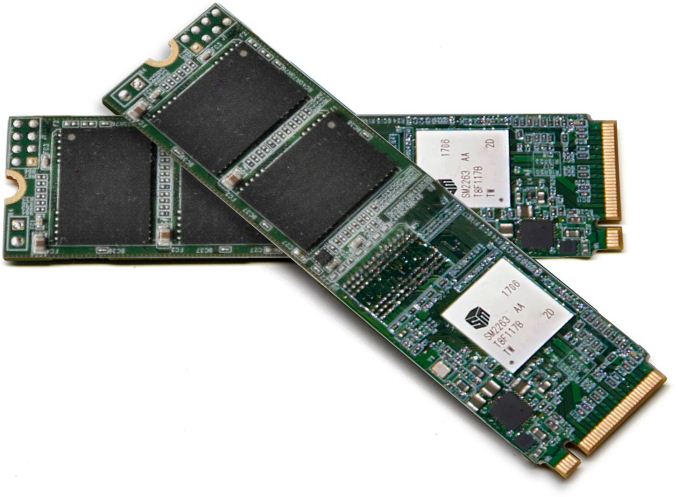


 Quote
Quote
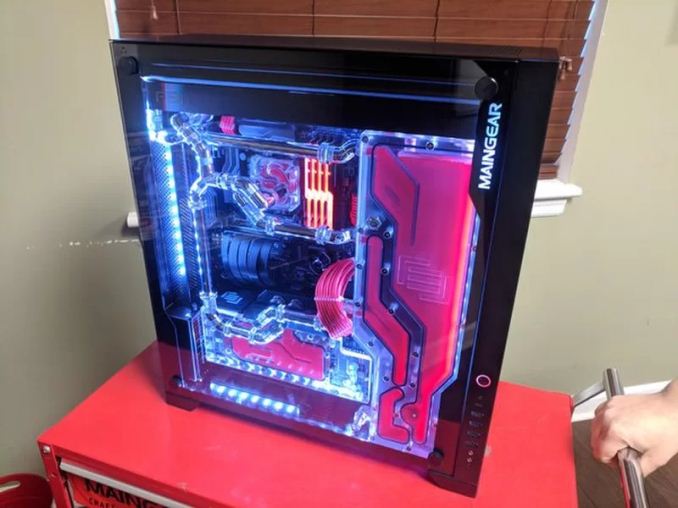
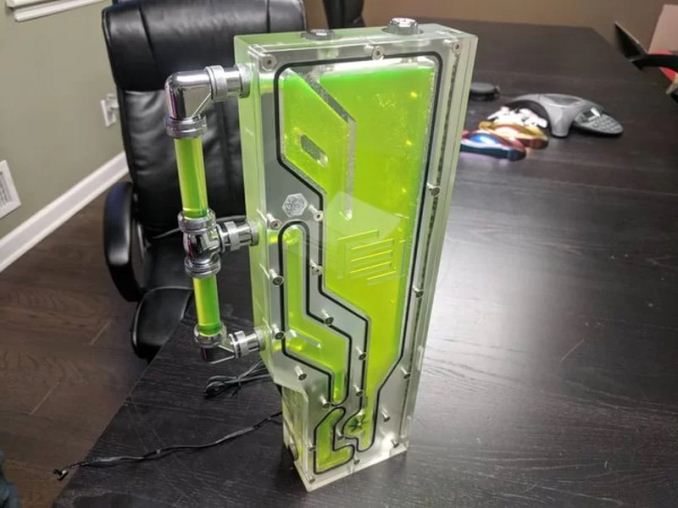

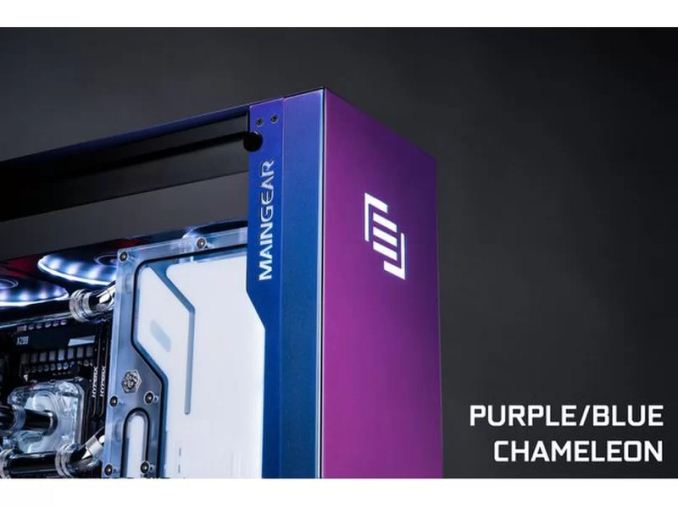
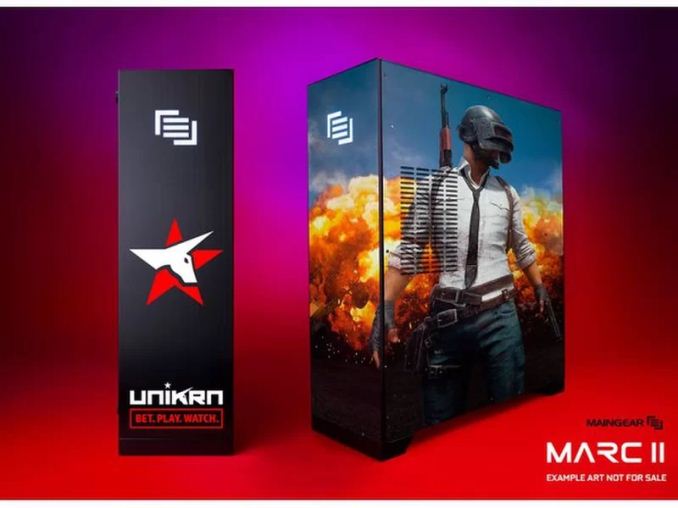
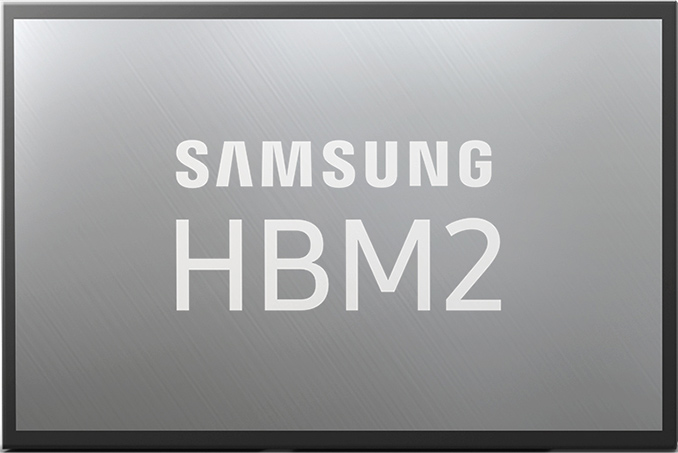
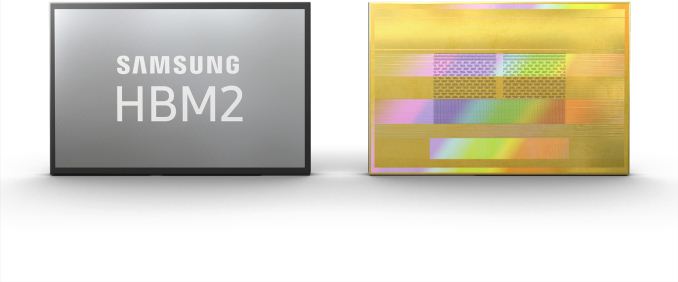

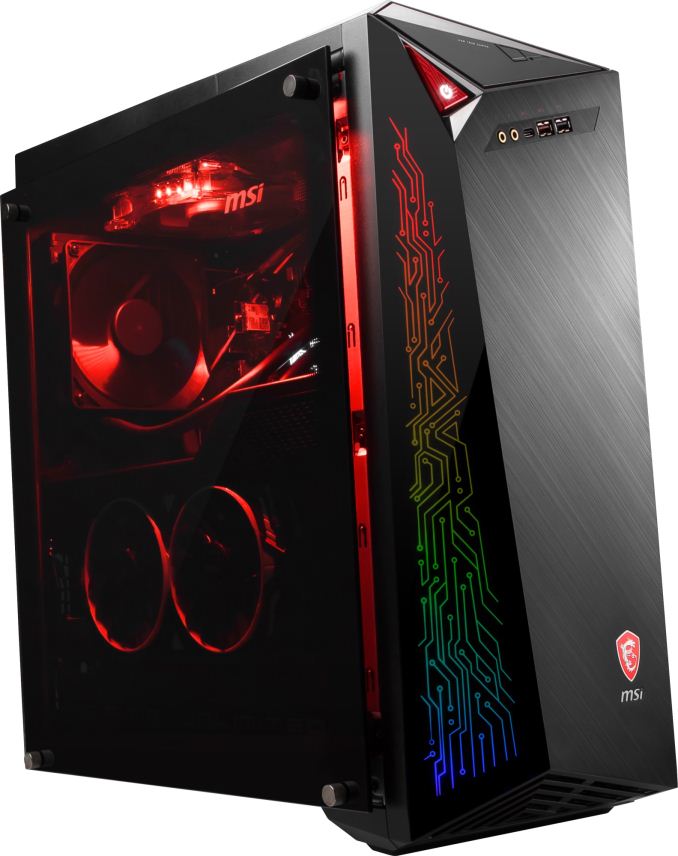
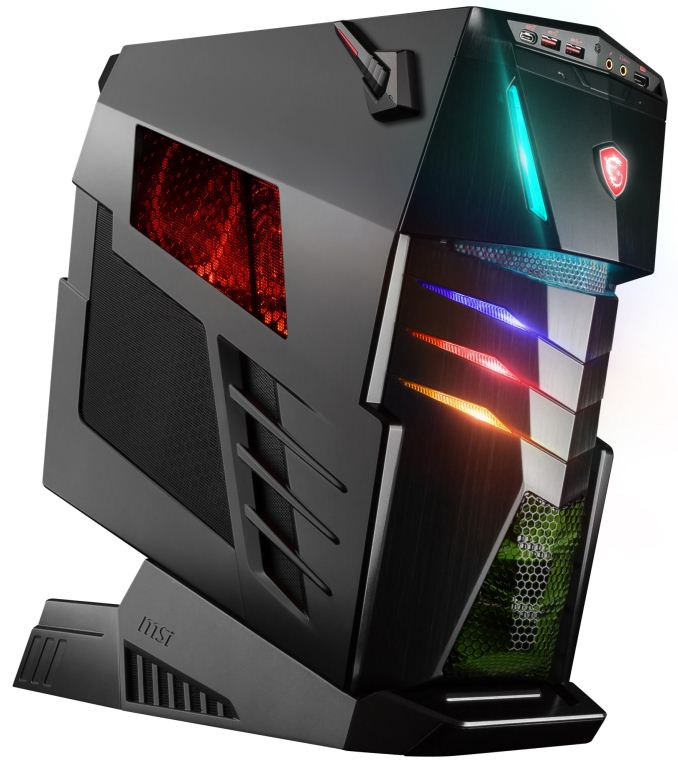


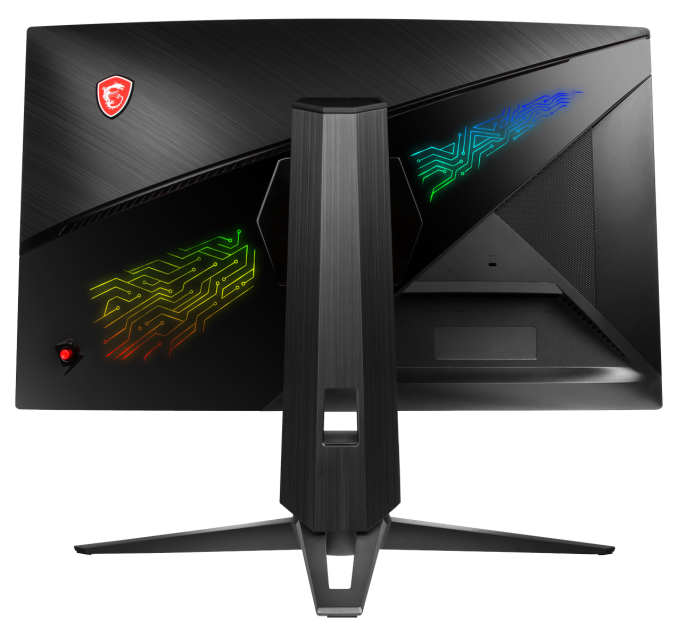
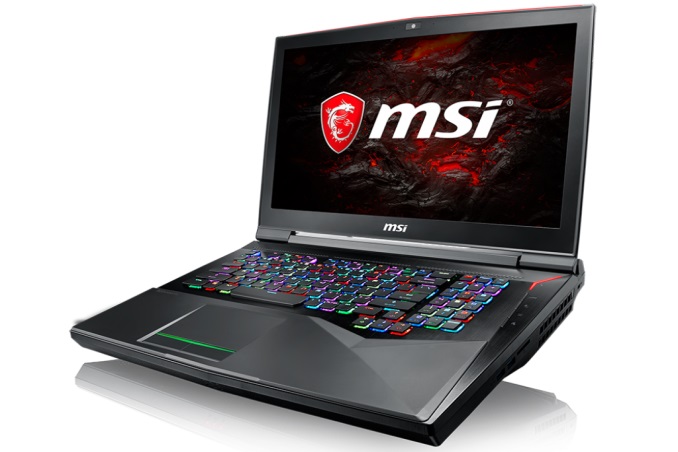
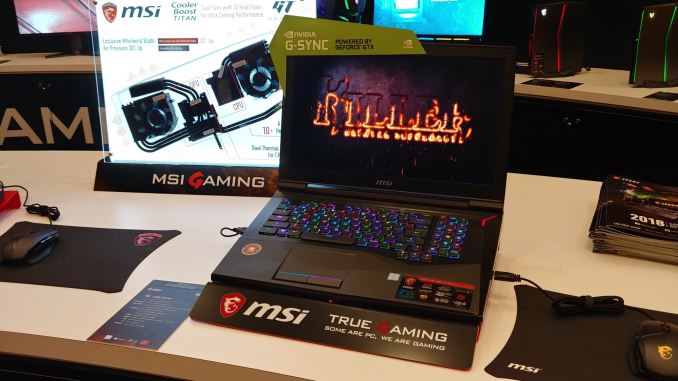

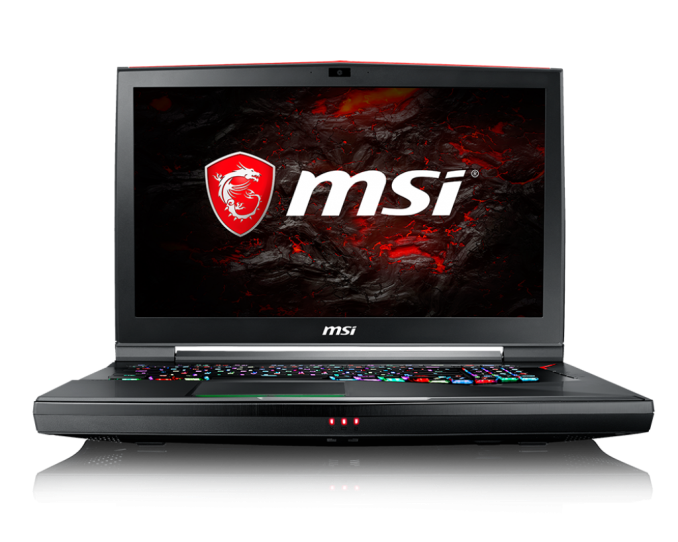
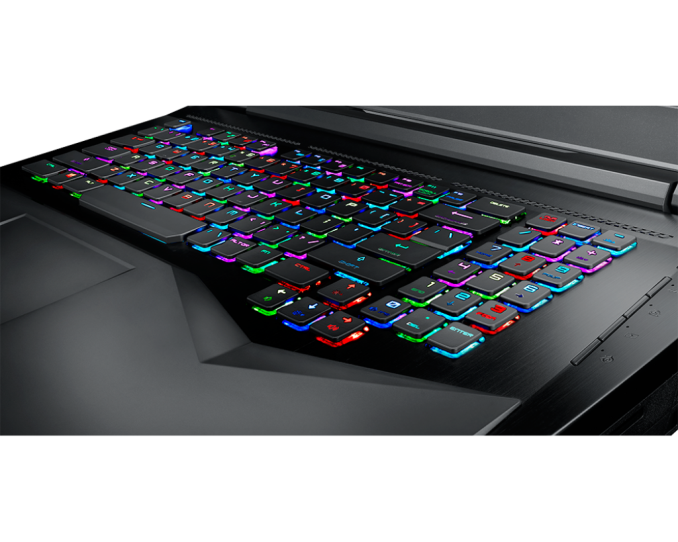
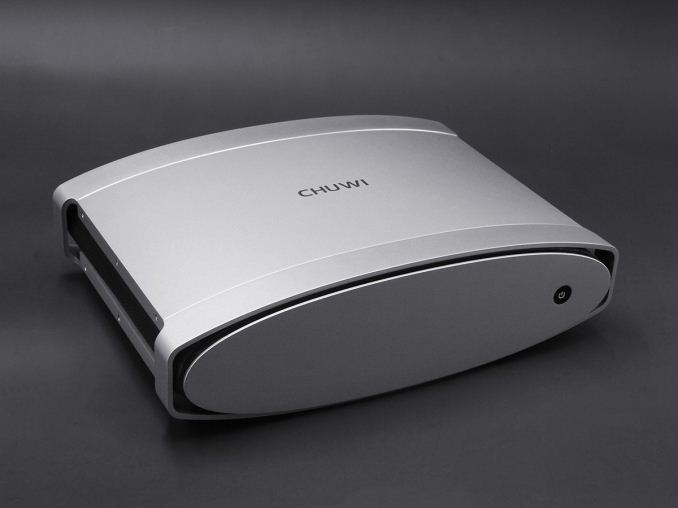
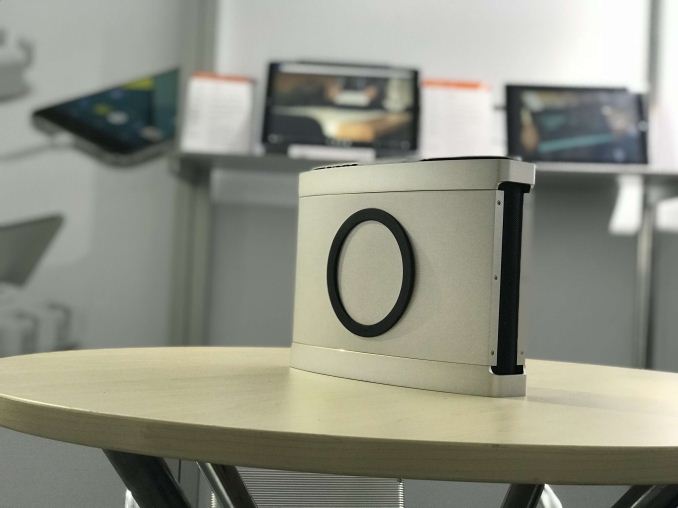

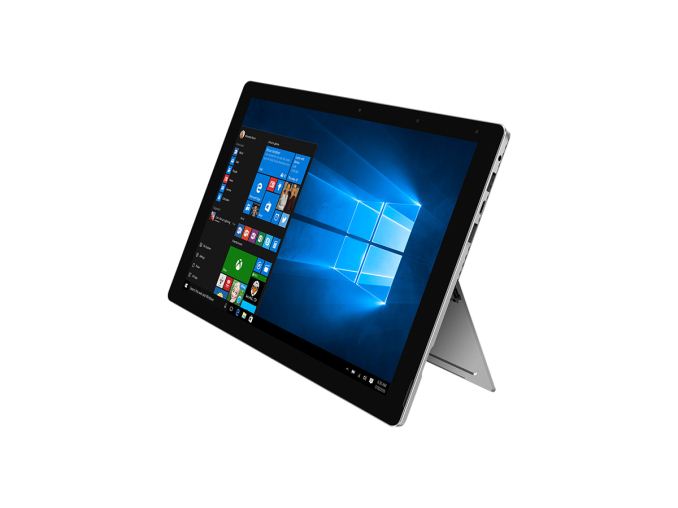
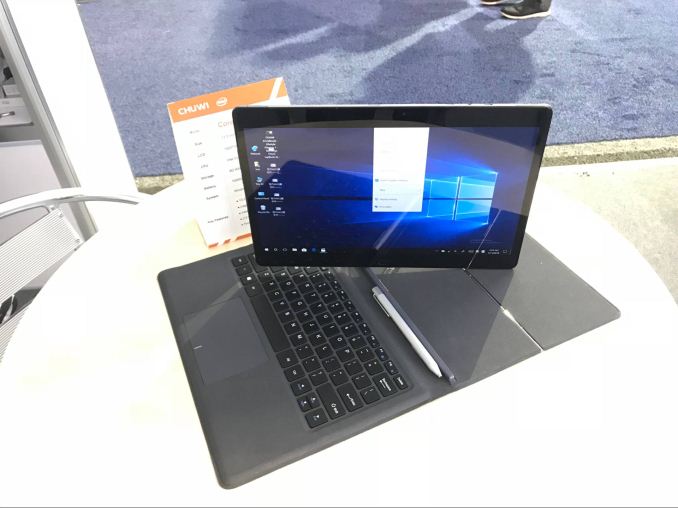

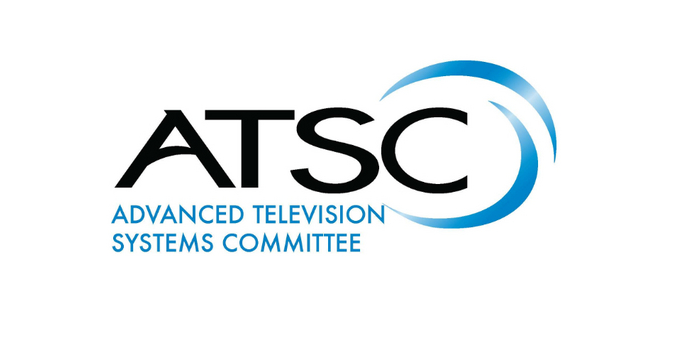
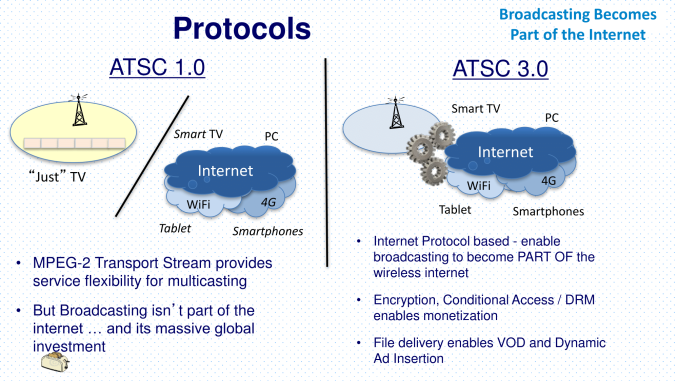
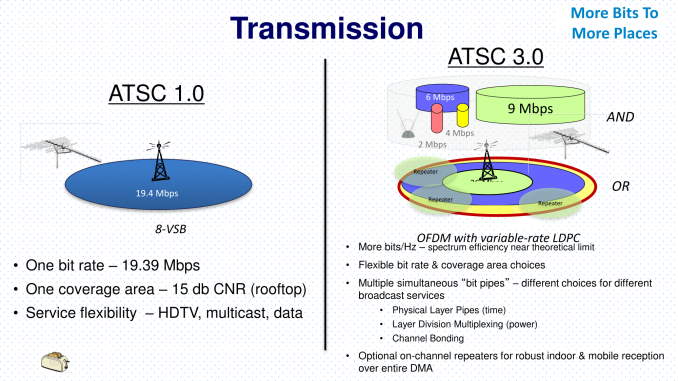


















Bookmarks